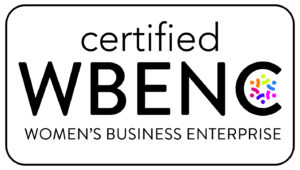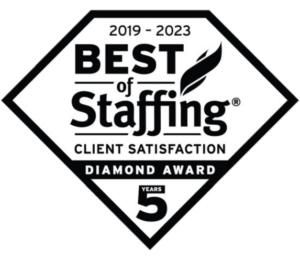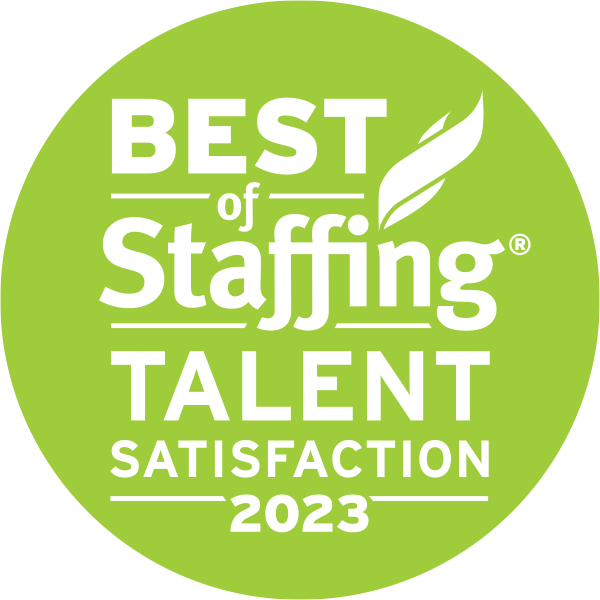
Nobody’s ever accused Steve Smith of playing it safe. He’s taken some chances most small employers wouldn’t even consider (and most brokers wouldn’t recommend). But with the benefit of hindsight we see that he isn’t so much a gambler as an early adopter. And it’s because of Smith’s willingness to take calculated risks that his company is having another record-setting year and finds itself well-positioned looking ahead to 2014, when most of the health reform provisions will take effect.
Smith is president of CornerStone Staffing, which specializes in clerical and accounting temporary assignments and salaried employee direct placement. Founded in 1991 by Steve and Jody Smith, the company now has 10 offices in the Dallas-Fort Worth metroplex and supports between 1,500 and 2,000 temporaries per week. In a difficult job market, CornerStone is helping people find work—temporary employees are the company’s product, so they have a lot of inventory, but there’s also a lot of demand.
“Right now is a wonderful time for us,” Smith says. “As unemployment is high, we’re flushed with people, so it costs less to recruit. And businesses are beginning to feel a little more bullish, so we’re also flushed with orders.” CornerStone has grown by 20 percent in each of the last two years.
Higher deductible, happier employees?
The company’s 40-plus full-time employees are eligible to enroll in a $5,000 deductible HSA-compatible plan, something they couldn’t be happier about. That’s because the company has been committed to a consumer-directed strategy from the beginning and has taken all the right steps to make sure its employees understand their plan and know how to get the most out of their benefits. And, most importantly, they haven’t been stingy with the premium savings.
How it all started
“CornerStone used to have an HMO—actually, a dual-option HMO/PPO,” recalls Bryan Keathley, president of Safe Harbor Benefits in Arlington, Texas. Keathley has been the group’s employee benefits broker since 2000. “They had two carriers in the first four years, and Steve was frustrated that the only solution the industry had to offset double-digit renewal increases was to raise the deductible. That’s why, in 2005, CornerStone was the first group in North Texas to go with Humana’s new bundled HRA solution. And it’s also why, a year later, they introduced an HSA.”
Normally, first-year enrollment in an HSA-qualified plan is pretty low, and this was especially true back in 2006, when HSAs were still in their infancy. But that wasn’t CornerStone’s experience. The first year this option was introduced, nearly all of the employees opted for the HSA, even though it was paired with a traditional PPO copay plan. That’s probably because the company made such a large HSA contribution.
“CornerStone Staffing paid 100 percent of the premium on both plans and let the employees choose,” Smith explains, “but the HSA was the more attractive option. It was a win-win. We were saving money by moving from the PPO plan to the HSA, so we decided to pass that on to the employees—even though the co-pays went away and deductibles became a part of the plan, we deposited the premium savings in our colleagues’ [HSA] bank accounts.”
That first year, CornerStone put a lot of money in the accounts: $500 for employee only coverage, $1,000 for families, and a dollar-for-dollar match after that. Between the employer and employee contributions, employees could pay almost all of their $3,000 deductible with pre-tax dollars, and the insurance company paid 100 percent of the cost after that.
“It really was a no-brainer,” Keathley says. “CornerStone was very generous with its contributions, and when employees did the math, they could see that the HSA was a better option, regardless of their level of utilization.”
“Our goal from the beginning was to share fiscal responsibility,” Smith says. “Having been under an HMO and never asking what the price was, we began to think that our copays might actually be encouraging unwise decisions and driving up claims costs. It’s the employees’ health plan, so we decided to give them the money to manage themselves, and they’ve done a good job. Their fiscal responsibility has reduced our claims dollars and put money in their pockets.”
CornerStone hoped people would opt for the HSA, but they didn’t want to force them.
“Our strategy was to help them get started,” Smith says, “so we gave them some seed money the first year. The whole concept was sort of long-term.”
While it would cost more up front, CornerStone’s management believed that if employees and their families were shopping for their health care, then over time premiums would go down because claims would go down. And that did happen, but not right away.
Keathley recalls some difficult renewal meetings in 2007 and 2008 when he had to tell Smith that his costs were going up even though the group was running well. “The first year, CornerStone made a huge contribution to the employees’ accounts, and almost everyone took the HSA. The second year, they went total replacement— employees could choose between a $3,000 and a $5,000 deductible, with different employer contribution amounts. Everyone was happy with their benefits, and they were becoming better consumers. Utilization decreased, but the premiums didn’t.”
Smith was initially attracted to the HSA option because of the promise that, if employees were sharing in the fiscal responsibility and adjusted their behavior accordingly, CornerStone would be rewarded with lower health insurance premiums. So naturally, he wasn’t very happy when they got an 11 percent renewal increase.
“The problem with fully insured plans,” Keathley explains, “is that you’re pooled with all the other groups in your area. Even though there was no premium increase due to claims, CornerStone was still getting hit with trend. So they decided to get out of the pool.”
If you want it done right…
After three years on an HSA, employees were making good decisions and claims costs were going in the right direction. Still, that wasn’t reflected in the renewal rates, so CornerStone felt the insurance company wasn’t holding up its end of the bargain. Their solution? Become the insurer.
In late 2008, Smith asked Safe Harbor Benefits to begin exploring self-insured plans for CornerStone. Keathley explained that self-insuring a small group plan was a fairly uncommon practice and that there wouldn’t be a lot of options available, a fact that was proven when most TPAs declined to quote. But he did find one solution that caught Smith’s interest—a bundled plan from Great West Healthcare.
CornerStone began self-insuring in 2009, sticking with the dual option HDHPs and continuing to make generous contributions to the employees’ health savings accounts. Against their broker’s advice, CornerStone rolled the dice and went with a higher-than-normal stop-loss amount ($50k specific with no aggregate) and made some other adjustments that caused Great West to jump through some hoops. Everyone seemed nervous about the decision—except for Smith.
In the present
Now in 2012, CornerStone has been self-insured for just over three years, and they say the strategy is working. They’re still with Great West, now owned by Cigna, and the company gets regular reports about how the plan is running.
“Premiums keep going up, nearly 20 percent in the last three years,” Smith points out. He’s talking about the amount he pays Cigna for reinsurance and administrative costs, something you can never escape according to Keathley, even in the self-insured environment. “But claims are going down,” Smith concedes, “so overall we’re paying less.”
Quite a bit less, actually. Because the reinsurance and administrative costs are only a portion of CornerStone’s total outlay, the dollar amount represented by the renewal increases isn’t that great—just over $12,000 in three years. During that time, claims have decreased by $29,000. Overall, CornerStone paid $3,000 less in 2010 than in 2009 and $14,000 less in 2011 than in 2010—not bad in an era of double-digit rate increases.
All of the employees are now on a $5,000 deductible, 100 percent HSA plan, and most have substantial money in their accounts. CornerStone no longer makes an up-front deposit, and they’ve reduced their match to 50 percent of what the employees contribute. That’s still a considerable amount though, as an employee with family coverage will get more than $2,000 from CornerStone if she’s willing to contribute $4,000. That’s why most employees continue to max out their contributions.
CornerStone says they’re always searching for ways to help its employees become better health care consumers. Two years ago, they introduced Compass Professional Health Services, a patient advocacy service whose mission is “to implement health care consumerism the right way.” Employees have access, via phone or email, to health care advocates who can help them find medical providers, identify lower-cost facilities for high-dollar procedures, review medical bills, and resolve claims problems. On average, Compass members save $620 every year by avoiding overpriced medical care and save many stressful hours of deciphering medical bills or calling insurance companies.
What’s next?
The company is planning to further modify its HSA contributions. To receive the maximum amount in 2013, employees will be asked to complete Cigna’s baseline Health Risk Assessment and participate in a wellness program.
For his part, Keathley is looking for ways to adjust the plan design to keep employees involved after they meet their deductible, either by paying a coinsurance percentage or, perhaps, copays for prescription drugs. This cost-sharing, of course, would count toward the HSA plan’s out-of-pocket maximum. “By asking employees to continue to pay a portion of the bill after they’ve met their deductible, they’re more likely to continue thinking like consumers,” he says.
Keathley also says he’s unashamed to admit he’s learned a lot working with CornerStone, saying working with Smith made him “think outside the box.”
“A lot of brokers get in the habit of recommending the same solutions year after year, but clients like Steve keep me on my toes, and I think that’s made me a better broker.”
Learning from CornerStone:
- It’s better to ease employees into something new rather than forcing them. That’s why CornerStone offered a dual-option year one but backed it up with an incentive to select the HSA option.
- Investing in the short term can pay big dividends in the long run. CornerStone paid more for the HSA at first, but doing so helped increase adoption and build the employee accounts. Over time, this allowed the company to reduce its contribution and increase the deductible to help offset the renewal increases.
- Consumerism really does work. When employees are educated and engaged and are provided with the right tools, they really will shop around for health care and make better purchasing decisions.
- Self-insuring is a viable option for small groups.
- Information is power. Keathley and Smith study the numbers and make adjustments accordingly. They’re always tweaking something—the plan design, the contribution amounts, the amount of risk the company’s willing to retain. They stick with the strategies that work and make adjustments to the ones that don’t.
- Employee benefits are still a great recruitment and retention tool. CornerStone says its employees are happy with their plan and healthier because they have it—and, as you might expect, the company has very little turnover.
BY ERIC JOHNSON
April 1, 2012




